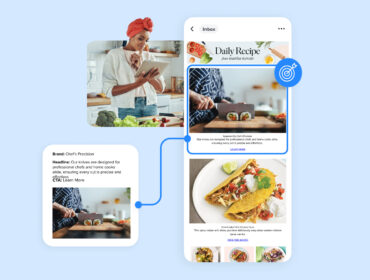How small publishers can monetize increased traffic during COVID-19

Small publishers are seeing historic increases in traffic during the COVID-19 pandemic – and it’s no secret why.
“People are clamoring for credible news, so they’re going back to visiting local media sites directly,” says Fran Wills, CEO of Local Media Consortium, in a recent Real Time Banter webinar. “We’ve seen a huge spike in direct traffic from local readers.”
At the same time, these publishers are reporting a 30–50% decline in ad revenue. Why? Because advertisers are struggling to sustain their budgets and pivot their strategies in this global crisis. In fact, IAB reported that 70% of media buyers have adjusted or paused their ad spend and 16% are still deciding how to proceed. As a result, inventory is now being filled with lower-CPM campaigns, leaving publishers scrambling to make up lost revenue.
“I don’t think any of us were ready for this,” Wills says. “There’s been such a change in the business model for local publishers. We used to have a large share of advertising, and over the past five or so years that has shifted.”
So, how can local publishers better monetize this traffic?
Let’s take a look.

Work with brands to develop allowlists
The biggest problem is that advertisers are blocklisting COVID-19 news coverage, afraid to run their ads alongside negative content.
“Brands have always advertised adjacent to hard news on legacy channels, but on digital channels, they’re more concerned about showing up with fraudulent or not credible content,” Wills says. “Somehow the local news industry ended up in that same bucket.
Local Media Consortium, which represents local media companies across the US and Canada, took a proactive approach to this issue. They launched a press release inviting over 30 large agencies and advertisers to reach out to them for the allowlist.
“We’re advocating that our content is credible and something consumers want to access, particularly now,” Wills says.
It’s been effective, as Wills has seen responses from large and local agencies, retailers, health care providers, and even trade associations.

Increase email subscription campaigns
Ad supply may be dwindling, but email subscriptions and engagements are increasing, according to Local Media Consortium. LiveIntent has also seen a 31% increase in email impressions and 24% increase in revenue for local news publications.
“People are ready, willing, and able to provide their email right now,” Wills says. “The more direct relationships we can have with consumers, the better.”
Building email subscriptions now can have long-term payoffs too. Publications can monetize those emails to offset ad revenue loss, inspire audiences to become paid members, and drive them to their websites for further ad engagement.
“Long-term, email will allow us to get feedback from communities about what kind of information is important to them, so we can retain those subscribers and have more balance between consumer and advertiser revenue,” Wills says. “Especially with cookies going away in a couple of years, first-party data will be more important as time goes on.”

Advocate for the importance of local news
Efforts to reach audiences with credible news during COVID-19 are shining a light on the value of local media companies. In fact, Local Media Consortium has seen an increase in donations during the pandemic.
“If there’s a bright spot in this incredibly significant time,” Wills says, “there is more awareness among consumers about the work that local publishers do and that it costs money to create this content.”
So don’t be afraid to ask for support and double down on building those relationships with consumers and advertisers.
“Credible, human audiences are accessing our outlets every day,” Wills says. “So there’s an opportunity for brands – particularly in cause marketing or helpful content. There’s no better place to show up than local news.”

Curious about more impacts of COVID-19? Download our eBook to learn how publishers and advertisers are discovering new windows of opportunity to retain and grow relationships with customers during this time.


